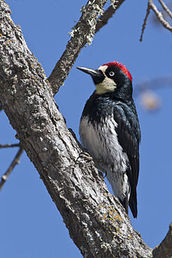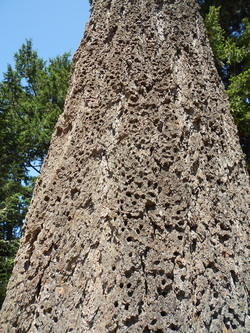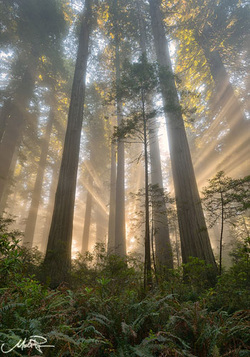|
I'm so glad that more and more kids are having environmental education experiences and grasping ecological concepts like habitat loss, food chains, pollination, reproduction, and especially adaptation. You have to wonder how the people making decisions at herbicide companies think. Don't they know that organisms can adapt and develop resistance to herbicides, making them stronger and even harder to eradicate than before? Don't they know that they are destroying the habitat for the Monarch butterfly's reproductive process by killing milkweed along with other unwanted "weeds" ? Milkweed is the only plant upon which Monarch butterflies lay their eggs.
Over the past 15 years industrial agriculture has ramped up its use of the herbicide glyphosate on and around GMO crops engineered to be resistant to this milkweed killer. As a result, the migrating population of Monarch butterflies has dropped by more than 90 %. While the milkweed has died off, the "weeds" the farmers are trying to kill have grown stronger and more resistant to glyphosate. Now the chemical companies are selling farmers an even more powerful herbicide to combat the "super weeds". And, because the milkweed is not herbicide resistant it will no doubt start dying at an even faster rate. Trouble for the monarch butterflies! And trouble for people too. Butterflies, like bees, are pollinators. We need them around to spread pollen around and fertilize many different plants. If we make it impossible for monarch butterflies to reproduce by taking away their milkweed, we lose them as pollinators of other plants that we need. All things are connected in the web of life. Whatever we do to the web, we do to ourselves. Let's hear it for environmental educators who teach students about the web of life. Let's hear it for the teachers that take their students to EE programs or teach ecological concepts themselves at school. We need a future generation of decision makers that understand ecology and the interconnectedness of all living things. And so do those delicately and spectacularly decorated black, white and orange monarch butterflies.
1 Comment
Remember that glorious place in the movie Ants? I wonder what a real insectopia would be like? As spring approaches we start to think about our pollinators in the insect world. How are the bees and butterflies doing?
The answer is not so well. And neither are the beekeepers. A Wall Street Journal article I read the other day says that because of the massive die-offs of honey-bees, beekeepers are being forced out of their profession, and may be an endangered species themselves. For nearly a decade beekeepers have been losing 30% of their bees each winter. Some lost 40 and 50 percent last winter. The annual cost of maintaining a healthy hive has quadrupled in the last 15 years, and the beekeepers can't afford to do business any longer. Meanwhile, honey bees now pollinate more than $50 billion of crops each year, including apples, almonds and cherries. Honey bees are responsible for pollinating one-third of the American diet! Without beekeepers to care for the numbers of pollinators, U.S. crop production could slow down and we'll all have to pay a lot more for our food or rely on imported items. That's a look at the economics of honey bees. So what is killing the honeybees? Scientists blame a combination of parasites, pesticides and poor nutrition as the causes of death. Many believe the number one culprit is Clothianidin, a pesticide. Beekeepers who have tried to ward off pests and disease in their hives are losing the battle to pesticides. Can we imagine a pesticide free world? Organic farmers are showing us how it works. Now, that's an insectopia. Stay tuned for another blog on another pollinator at risk, the Monarch butterfly. Until then I leave you with a verse from "Grace for Pollinators" by Nancy Schimmel. For this our food, we thank the bees that pollinate the flowers. We thank the moths that do the same, in the evening hours. We thank the birds and butterflies in every habitat. And when we eat bananas, we sing to thank the bat.  Maybe you want it in order to shred through on your skis or snowboard, perhaps you desire it to build a friend out of snow, or to round the perfect projectile, or to mold yourself into the likeness of an Angel. Whatever the reason we all seem to love that sweet frozen water, and for good reason. As the winter waxes strong and the New Year approaches and frostings of snow start to cover the land, lets take a look at just how special, beautiful, and crucial our frozen friend really is. Water, H20, the nectar of life. Truly without it our little 'Third Rock from the Sun' would not be the place we know and love, nor would we be alive to appreciate it. There is approximately 332.5 million cubic miles of water on Earth. Of this nearly 97% is found in Oceans and Seas and nearly 98% is saline (salty). That leaves a little over 2% of all Earth's water that is fresh water, the water that humans and many other plants and animals need to survive. Of this fresh water over 1.5% is frozen in glaciers, ice, and snow.  The key to our existence is locked away and kept secure in frozen water and groundwater. Every drifting, dazzling, unique snowflake is more than just a visual marvel, it is an investment in the stock of our lives. The Earth's snowpack is essential to the health of our rivers, lakes, and streams. The gradual release and replenishing of fresh surface water that only snowpack can naturally provide keeps us all alive. So while you carve up that fresh powder, hurl a snowball at your best friend, and spread out your Angelic wings; take a moment to stare straight up into the falling snow and watch as it dances with your breath and remember each falling flake is a drop of beauty, fun, and life. So, let it snow, let it snow, let it snow.  Acorn Woodpecker. Acorn Woodpecker. When I listen to Bob Dylan's classic song "Knockin' On Heaven's Door" I can't help but wonder what it was that inspired him to write such an iconic verse. Today I postulate that perhaps it was the sound of an Acorn Woodpecker, "knock, knock, knockin'" on the trunk of an old mature tree. As wonderful as Dylan and his music may be this post is in fact dedicated to the latter, the equally brilliant woodpecker. Like the iconic Dylan, the woodpecker is an icon of the avian world. Perhaps this is due to the fact that it makes its presence well known with its often hard to ignore hammering, but there is more to this wonderful Picidae than meets the ear. Woodpeckers play an important role in forest ecosystems and are often a good index of biodiversity and health within a forest.  Acorn Woodpecker holes in a Douglas Fir. Acorn Woodpecker holes in a Douglas Fir. Most notably the woodpecker serves as a cavity creator for secondhand cavity nesters. Thanks to strong beaks, woodpeckers like our friend the Acorn Woodpecker (above) encircle trees with small cavities to store acorns and attract insects for the woodpecker to eat. The woodpecker also creates larger cavities for breeding and nesting purposes. After the initial use by the woodpecker, these large cavities serve as homes for many other birds and small animals. More than just being one of nature's top carpenters the woodpecker is a common indicator of forest health. Many woodpeckers need specific habitats to thrive. The presence of decaying wood in mature deciduous forests is one such factor. A forest bereft of woodpeckers is likely to be a forest lacking mature trees and the bacteria and fungi that thrive in their presence. It is also likely to be a forest with an overpopulation of bark beetles, a common food source of woodpeckers. When beetle populations are left unchecked they can wreak havoc on tree health, furthering the decline of overall forest health.
So next time you listen to Mr. Dylan or hear the Heavenly Hammering of a woodpecker, remember how important that sound really is. It is the song of a healthy and diverse forest ecosystem, and music to appreciative ears. For more information on the importance of woodpeckers check out the study done by the Finnish Environment Institute: http://www.sekj.org/PDF/anzf43/anzf43-082.pdf  Screens (like the one you're at right now), phone calls, charts, text books, deadlines, they all require our immediate attention. In most facets of day to day life our minds are on task, our focus is directed from one specific point or problem to another; finishing a lesson plan, fixing a leak, buying groceries, preparing dinner. The lists go on and on, and the only break we seem to get is sleep, which often is not as much as we would like. All of these tasks require what is known as directed attention. Directed attention, is attention that requires focus on the task at hand without giving way to emotions and distractions in the moment. Life bombards us with stimuli; noises, smells, sights, feelings, and when we are using directed attention we ignore these immediate stimuli, and make ourselves focus on some appointed issue. This type of attention utilizes our frontal lobe, and after a certain amount of use our frontal lobe gets tired and we become irritable and do not perform as well mentally. The solution to this problem of an overworked frontal lobe is to utilize other parts of the brain to give it rest. Seemingly a simple task, and the best part is it can be. 'Soft fascinations', are those that catch our attention in an effortless free-flowing manner; "hey I hear a bird", "it feels chilly out", "look at those falling leaves". When the mind is allowed to freely move between whatever immediate stimuli it receives it utilizes the other parts of the brain and has a restorative nature to the often taxed frontal lobe. This type of mental healing is known as Attention Restoration Theory (ART); the idea that the mind restores itself and actually performs better when it can participate in involuntary attention. Attention Restoration Theory claims that this can best be accomplished by spending time in nature. The stimuli presented by the natural world allow the brain to focus more on 'soft fascinations' instead of the directed tasks of most modern life. Students have been found to score better on memory tests and medical patients have been seen to recover more quickly with less need of pain killers when being exposed to nature instead of the sterile school and hospital environments. For more on the results of ART follow this link http://www-personal.umich.edu/~jjonides/pdf/2008_2.pdf to studies done by the University of Michigan.
What it all means is we need to get outside, and immerse ourselves in the natural world around us. It goes beyond the simple joy and beauty of nature and into our own minds and how they function. This blog post is dedicated to chlorophyll our often forgotten hero of photosynthesis. Remember it is the chlorophyll that captures and stores energy from sunlight that is necessary for photosynthesis(the process of turning light energy into chemical energy). This resourceful pigment is the key to the redox reaction necessary for the oxidation of water and carbon dioxide into O2 and H+. This process is responsible for almost all the O2 in the earth's atmosphere, this is the same oxygen we breath and need to live. Thank you chlorophyll! It then takes the H+ and uses it to produce ATP and in turn NADPH, a reductant responsible for taking CO2 and turning it into sugar that the plant uses for food. Talk about a 2 for 1, our friend chlorophyll is not only the driving force behind the production of the oxygen we breath but also the sugar plants need to sruvive. It keeps us both alive! We also have to mention it is a pretty pigment. That beautiful green color we see is a result of chlorophyll absorbing the blues and reds of the light spectrum more readily, and conversely doing a poor job of absorbing the greens and reflecting them back to our eyes making us see green. I'm talking about the color green, not money. If you would like to see more green check out our conservation page for stewardship opportunities, and excellent program options offered by FIELDGUIDES. To top it all off here is a slideshow of some fall photos and a poem "Ode to chlorophyll". Ode to chlorophyl
To that which makes a tree grow tall, And gives to us the colors of fall. From the deepest green to the lightest hue, Is there a color this subtle pigment can't accrue? Still it is more than color that leaves us in awe, It's the recipe of photosynthesis that gives life to all. A dash of exhaled CO2 and a splash of cool rain water, Brought to life by the energy of the heavenly sun, and the earthly daughter. Dancing the reactants till they become a sugar sweet, A nectar of pure life for every growing plant to eat. So as the seasons change and the horizon is painted anew, Think of our friend chlorophyl and the wonders it can do. Recently FIELDGUIDES was asked a question by the 8th grade students of Dayton Early College Academy about how we know what the earth's core is made of. FIELDGUIDES created this short video to explain the three main ways we know the earth's core is largely made of Iron alloy. If you have any science related questions for your school or classroom please feel free to contact FIELDGUIDES and we will do our best to answer your questions. Join FIELDGUIDES at the coast for a Day Program or an Overnight Campout this fall. We're participating in the CA Coastal Commission's COASTWEEKS program through October in an effort to get students outdoors, enjoying and caring for the coastline of California. Join us for a beach or state park exploration and include a Service Learning element with a Clean-Up or Public Education Project. For more information about COASTWEEKS go to coastforyou.org. To get in touch with FIELDGUIDES and design a program for your group Contact Us. The weather along the coast is at its best in the fall. We hope you'll bring your students outside sometime in the next couple of months.
 Going back to school and planning for the year ahead doesn't have to mean the end of being in the outdoors and camping. FIELDGUIDES is back in the office too, and we're ready to both schedule our returning clients and expand our schedule to bring new schools into the outdoors with us in 2014-15. Teachers you can still set up a Fall field trip(a Day Program or an overnight experience) for this fall. It's a great way to build teamwork, bond with your class, and watch friendships form among your students early on. It still feels a little bit like summer vacation for the kids ( and you) but they are learning at the same time! We are also ready to schedule our Spring season programs. Augment your science curriculum or social science/history studies by extending the experience outside the classroom at one of our coastal sites or our gold rush favorite - Malakoff Diggins State Historic Park in the Sierra Nevada foothills. We can create an activity plan that connects to the EEI Curriculum and other CA State Standards. August is the best time to look at your yearly schedule and reserve your best time slot with us. Talk to your colleagues and your principals and give us a call. |
